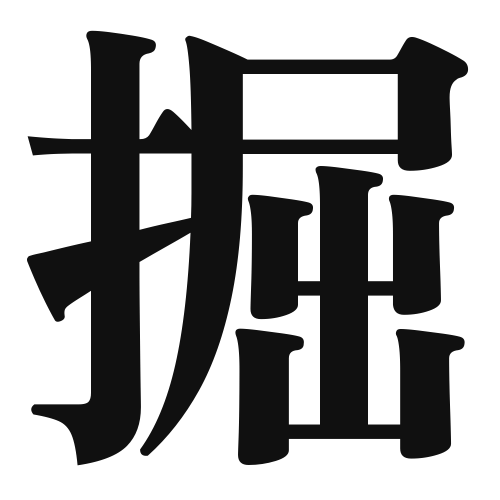1. Overview of Meaning
The kanji “掘” (pronounced “horu”) means “to dig” or “to excavate.” It is commonly used in contexts related to digging into the ground, such as for construction or archaeology.
2. Formation and Radical
Formation of the Kanji: The kanji “掘” is a phono-semantic compound (形声文字), which means it combines both a meaning component and a phonetic component. The left part “扌” (the hand radical) indicates an action done by hand, while the right part “亀” (turtle) provides the phonetic sound.
Radical: The radical of “掘” is “扌,” which is related to actions performed with the hand.
3. Examples of Usage
Common Words and Phrases: Some common words that include “掘” are:
- 掘る (horu) – to dig
- 掘削 (kussaku) – excavation
Example Sentences in Daily Conversation:
- 庭を掘って、花を植えます。 (Niwa o hotte, hana o uemasu.) – I will dig the garden to plant flowers.
- 彼は新しい井戸を掘っています。 (Kare wa atarashii ido o hotsu teimasu.) – He is digging a new well.
4. Synonyms and Antonyms
Similar Kanji: A similar kanji is “掘削” (kussaku), which specifically refers to the act of excavation, often in a more technical or industrial context.
Antonyms: An antonym of “掘” is “埋める” (umeru), which means “to bury.” While “掘” involves removing earth, “埋める” involves placing something into the ground.
5. Cultural and Historical Background
Relation to Japanese Culture: Digging has significant cultural implications in Japan, especially in agriculture and construction. The act of digging is often associated with hard work and perseverance.
Proverbs and Idioms: One common saying is “掘るほど出る” (horu hodo deru), which means “the more you dig, the more you find,” emphasizing the value of effort and persistence in achieving results.
